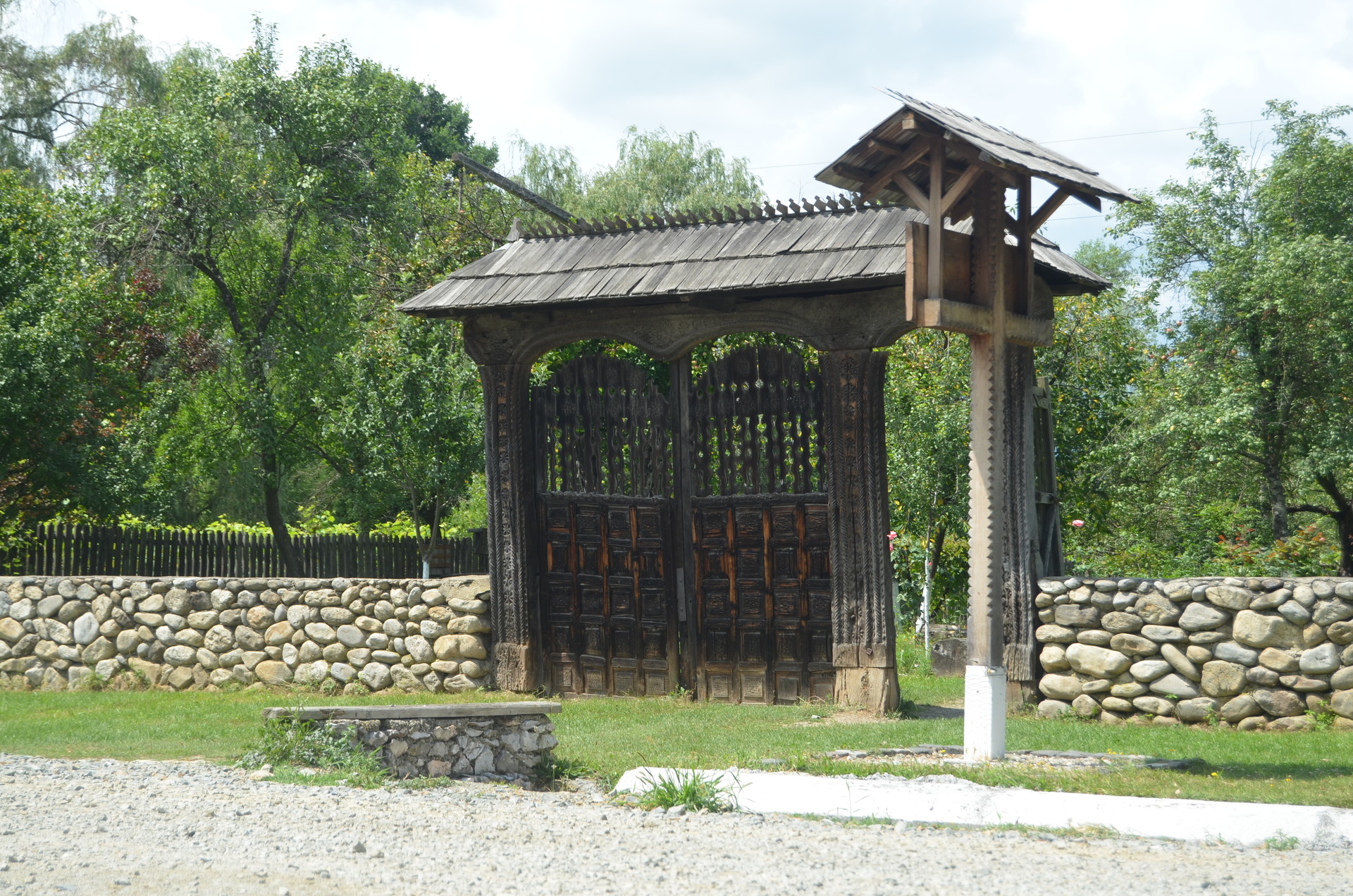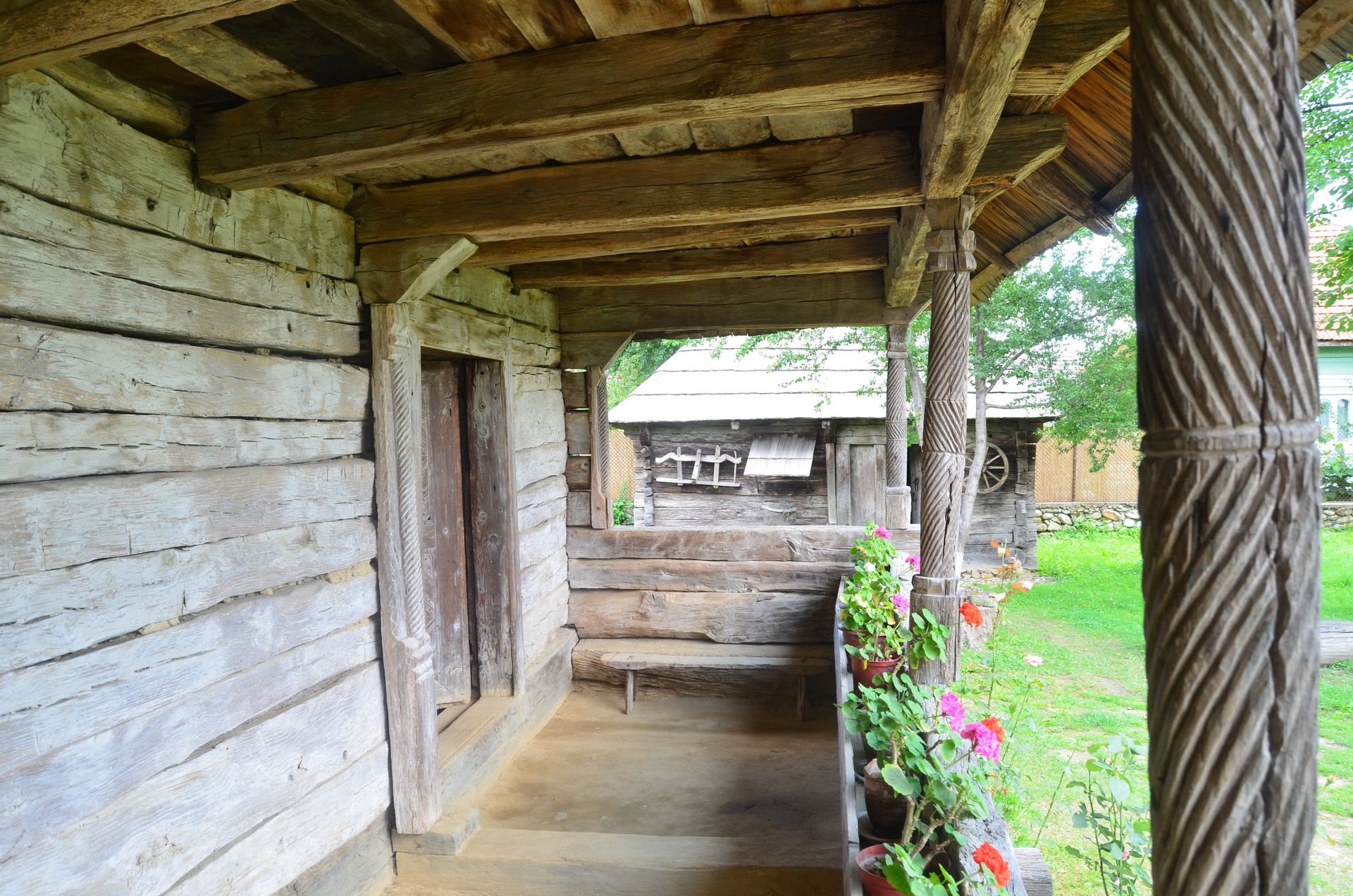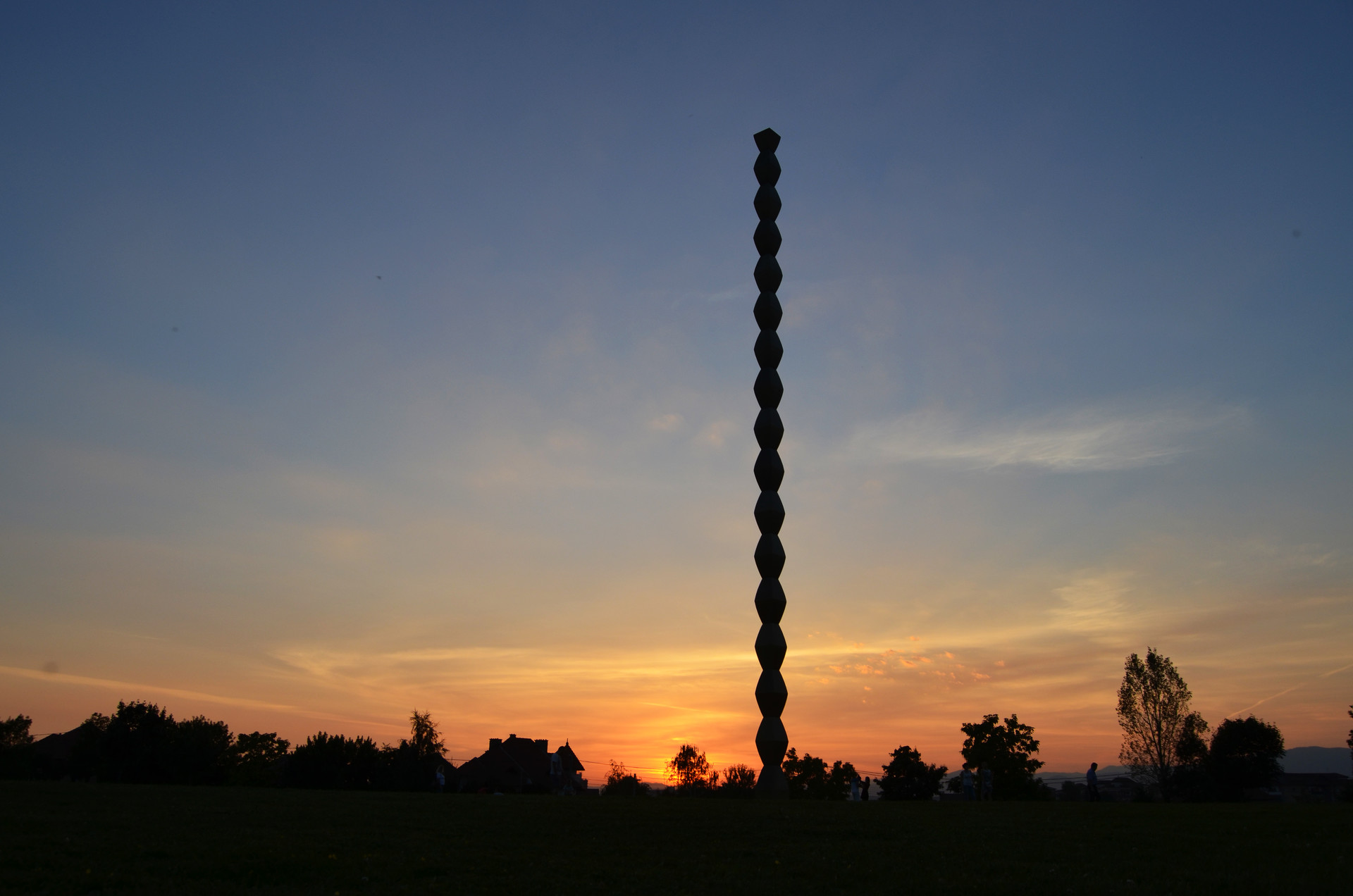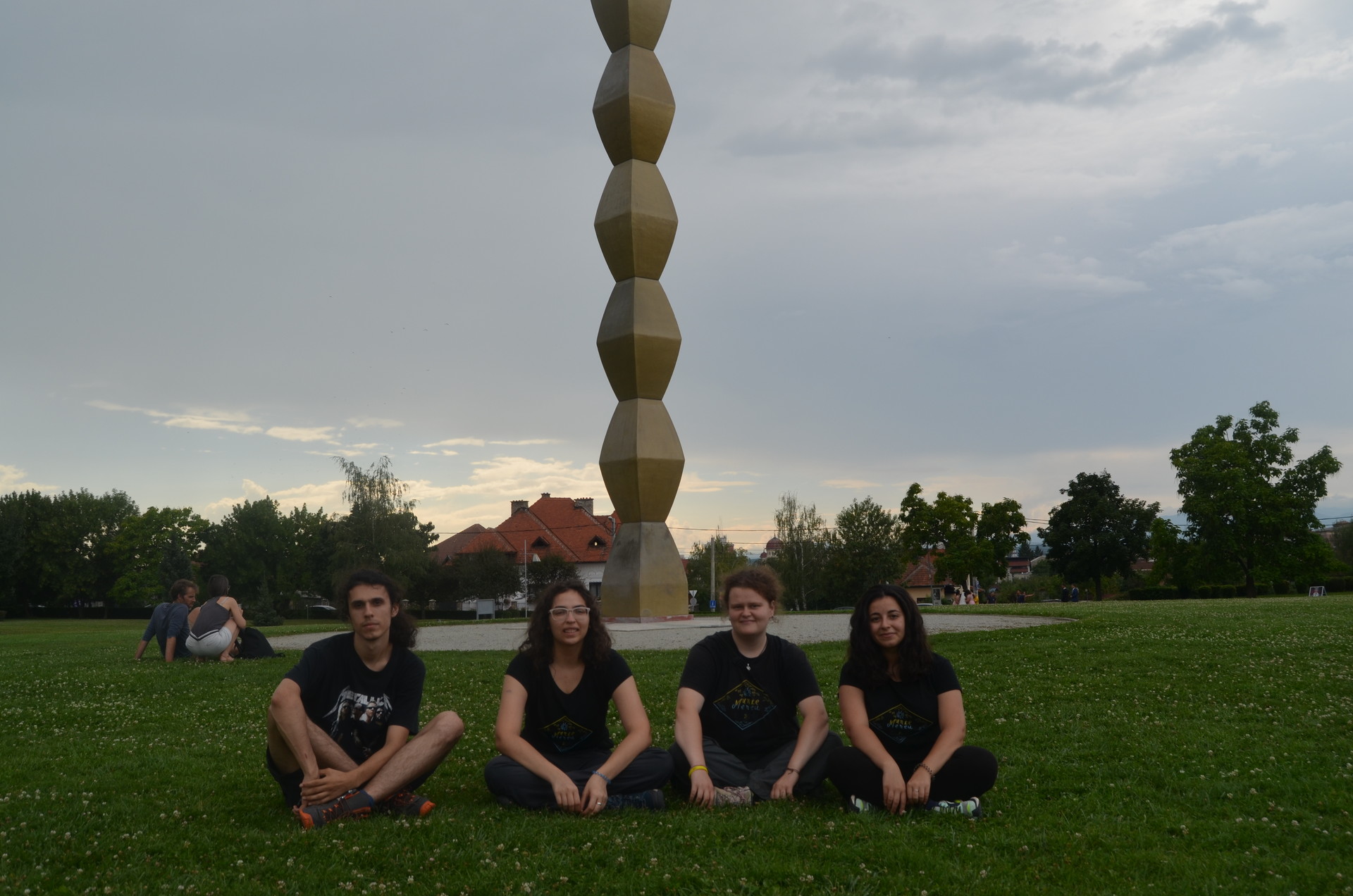Discovering Brâncuși's greatest artworks in Târgu Jiu
Discovering Brâncuși's greatest artworks in Târgu Jiu
A couple years ago my closest friends and I went to a road trip through Romania passing the highest roads of Romania named Transalpina and Transfăgărășan and stopping by a few interesting places that could not be missed while driving.

One of these spots was the village Hobița and the city of Târgu Jiu, first being the birthplace of one of the most famous and influential romanian artist of the 20th century and of the modern art, namely Constantin Brâncuși.
Recently we’ve been to another road trip and decided to visit again Brâncuși’s complex of sculptures created in Târgu Jiu because we had to remake a photo with the “Endless Column” that we took 3 or 4 years ago.

Before I write about this weird goal of ours, I want to offer some practical information of how people can go here and where they can find these cultural and worth seeing sites.
Târgu Jiu is the city residence of the Gorj County positioned in the south west of Romania.
The roads that took us to Târgu Jiu
We’ve started from our home county, Prahova and continued through the Southern Mountains until we have reached The Parângu Mare Mountains that are crossed by the highest road of Romania - Transalpina - at an altitude of 2145 meters measured in the Urdele Passway.

Transalpina, the road DN67C, links from north to south, the city of Sebeș located in Alba County and the city of Novaci in Gorj County. If people wanna drive this road they can enter from both parts. We were coming from Sebeș and we were travelling south to Novaci and even if we wanted to go back to our home, we have decided to visit again a bit of Târgu Jiu because it was 45 minutes away from where we were at.
Meanwhile, the father of my friend has suggested us that we should also go to the home village of Brâncuși, Hobița, which was located another 30 minutes away from Târgu Jiu.
Other ways of getting to Târgu Jiu and Romania’s railways
If people are not using a car to get to Târgu Jiu they can find another options to reach the destination. For example, from Bucharest a journey with the train takes up to 5 hours. Another large city located kind of close to Târgu Jiu is Râmnicu Vâlcea.
From Cluj Napoca the shortest journey by train takes at least 7 hours. If people are travelling through Romania for the first time they should know that the romanian train infrastructure is not so good and even if on the map the distances may seem short, the time to get from one part of the country to another can be very long.
Usually the trains have delays and are not driving with a high speed due to the lack of modern railways. It takes same patience, but the good thing is that from the train’s window travellers can admire beautiful landscapes especially if the train goes through the hills and mountains.
The home of Constantin Brâncuși
First, we have drove to Hobița on the road 67D. There we got the chance to see where the sculptor was born and lived by visiting the Constantin Brâncuși Memorial House.

The aspect of the construction has showed us how the popular architecture looked like at the end of 19th century. Everything was very simple and made out of natural materials such as wood and clay.

Besides the house that was an exhibit in itself, the museum’s collection has included photographs, documents, letters from which we saw different moments from the artist life. After we have spend same time in the house looking around at things foreign to our times, we were driving back to Târgu Jiu.
The main attraction of Târgu Jiu
As I mentioned in the beginning of the article, we were driving to this city to enjoy a walk in The Endless Column Park and The Central Park “Constantin Brâncuși” both located on Way of Heros that have housed the Monumental Ensemble formed by three main sculptures all belonging to Constantin Brâncuși:
-
The Endless Column
-
The Kiss Gate
-
The Silence Table
All had been created as a tribute to the heroes who fell during the First World War and had been arranged on the same axis, so on Calea Eroilor street visitors can see all of the three bodies of work.
The Monumental Ensemble can be visited at any time in the day or night because the park is open 24 hours. Also, there is no entry fee to see the monuments of art .
"The Kiss Gate"
The monumental "Kiss Gate" is positioned at the entrance of the park and people coming in the park can pass through it. A tradition of the gate is that lovers should kiss inside the gate for a good luck and love in their relationship. The symbol of the kiss can be also seen on the faces of each column consisting in two halves of a circle. The kissing gate symbolizes the triumph of live over death.
"The alley of chairs" and "The Table of Silence"
Passing beyond the "Kiss Gate", the main alley of the park - that includes as well small sculptures carved out in the simple shape of a chair and which has been named "The Alley of Chairs" ( Aleea Scaunelor ) symbolizing the moments of thinking about the stages of life - leads the pedestrians to another work belonging to Brâncuși: "The Silence Table".
As we were getting closer to "The Silence Table", we were feeling how its presence made an instant impact on us because we started to slow down our walk and movesand even rest around it while entering a state of meditation, deeper thinking or admiration.

At the same time, because we knew since before about the title and meaning of the monument, somehow, we were forced unconsciously to stop speaking. It was dawn and the entire landscape with the vegetation of the park, "The Silence Table" and the open view over the River Jiu with its waters colored by the red, orange and yellow of the sunset was more then wonderful.
The atmosphere alongside Brâncuși’s artworks was very peaceful and relaxing. His spirit was present through his artworks. "The Silence Table" symbolizes the table before the confrontation in the battle. Around it the artist places at an equal distance from the table 12 small chairs shaped like a hourglass.
The work is simple and clear, but leaves many ways of interpretation: it can make the viewer think to the Last Supper due to the 12 chairs that can represent the 12 Apostles and the table could be understood as the person of Jesus in Himself.
"The Endless Column"
The last monumen we wanted to see was "The Endless Column", so we had to walk back "The Alley of Chairs" and The Kissing Gate. We got out of the green area of the park but we kept walking on The Calea Eroilor street until we reached the park where the enormous long sculpture was located, more precisely in The Park of The Endless Column.
It was kind of easier to find it because the column was visible from a far distance due to its height of almost 30 meters. As we entered the triangular park we were overwhelmed by the imposant column that was rising up into the colorful sky of the sunset. The work was impressive due to its height, construction and arrangement into the surroundings.

The "Infinite Column" represents the “infinite sacrifice” symbolizing an axis of the world, so the column is like a link or connection between the Earth and the Heaven. This connection is made directly and even by the 17 cast iron modules with semi-modules at the ends. The lack of a different base or end indicates as well that there is no beginning and ending because in the sculptor perspective our world can be infinite.
Creating the modules, Brâncuși was inspired by the popular art and architecture of the 19th century, similar elements being found in the peasant houses built during that time period.
Brâncuși worked all of his creations with harmony because he wanted to bring joy to the people and it seemed like for him joy meant harmony and maybe that’s why all of his sculptures are defined by a simple, harmonic and clear aspect.

"The Infinite Column" is situated in the middle of a green area where people can sit to get in touch with the artwork. We sat down on the grass and looked up at the column. Since we were here for the second time, we wanted to replicate a photo that we took some years ago when we visited the place for the first time.

The thing was like that: when we were laying down on the grass and looked at the column from upside down, we noticed how the structure was grounded not into the ground but into the sky. The upside down view was more powerful then the normal point of view.

We took pictures like that and wanted to form a such tradition of our friendship. We decided that whenever we go back to this city, we must keep the tradition of this photograph.
Photo gallery
Content available in other languages
Want to have your own Erasmus blog?
If you are experiencing living abroad, you're an avid traveller or want to promote the city where you live... create your own blog and share your adventures!
I want to create my Erasmus blog! →













Comments (0 comments)